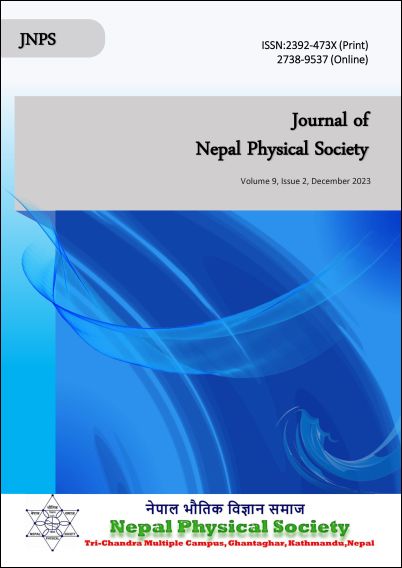Correlation of Sunspot Numbers and Geomagnetic Indices with Various Climate Change Parameters
DOI:
https://doi.org/10.3126/jnphyssoc.v9i2.62286Keywords:
Sunspot, Geomagnetic Indices, Climate change parameters, Cross-correlation, Continuous Wavelet TransformAbstract
In this paper, a comparative study of climate change parameters with the sunspots number, solar flux, and various geomagnetic indices are presented using statistical methods, cross-correlation analysis and Continuous Wavelet Transform (CWT). From the analysis of 31 years (almost 3 solar cycles) datasets, we observed a positive correlation of sunspot numbers with geomagnetic indices such as AE, Kp, Ap, Dst, and pc. This analysis indicates that variation in sunspot numbers can have a strong influence on the geomagnetic configuration. We also a found perfect positive correlation between CO2 -CH4 and CO2 – TSI, shown with a correlation coefficient of approximately 1 at 0-time lag. The sunspot number shows a high positive correlation with solar flux with a correlation coefficient of 0.95 at 0-time lag indicating that the earth is receiving energy from the sun, which is small but not a negligible fraction of expected global warming. The wavelet analysis carried out on sunspot number (R), Methane emission (CH4), Carbon dioxide emission (CO2), Land-Ocean Temperature (LOT), Solar Flux (F10), and, Total Solar Irradiance (TSI) support the evidence of ~11 years of periodicities. Both analyses suggested that the recent climate change is mostly affected by anthropogenic forcing (long-lived greenhouse gases) followed by natural forcing (sunspot number) which cannot be neglected. Thus, the correlation and wavelet analysis suggest that the sun also has a significant role in climate change, and, understanding the role of solar variability is essential to the interpretation of past and prediction of future climate.
Downloads
Downloads
Published
How to Cite
Issue
Section
License
All right reserved. No part of this Journal may be reproduced in any form or by any electronic or mechanical means, including information storage and retrieval system, without permission in writing from the publisher, except by a reviewer who may quote brief passage in a review. The views and interpretation in this journal are those of author(s) and they are not attributable to the NPS.




